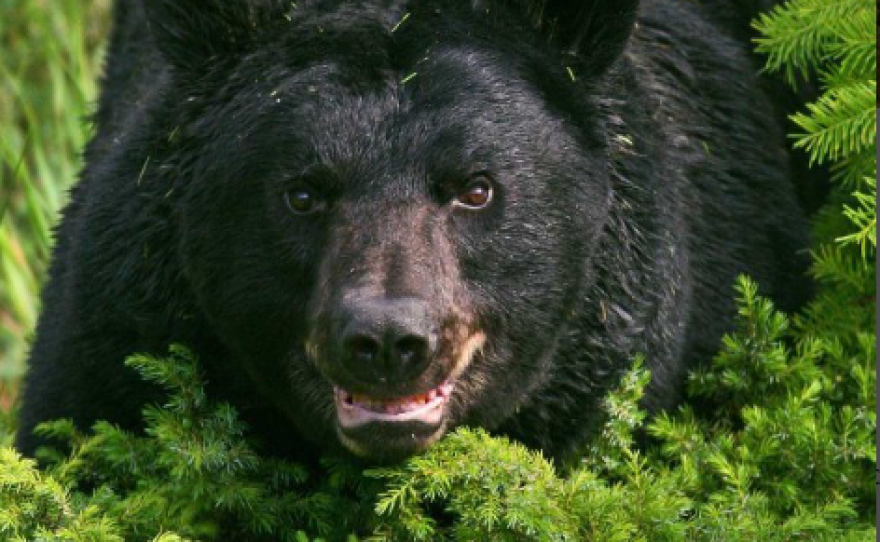
The Utah Division of Wildlife Resources received 27 reports of bear encounters in 2018, yet it’s mid-July and they’ve already had 25 reports of bears rummaging through campgrounds, playgrounds, back yards and garbage cans.
Black bears can be found throughout the state of Utah, but they mostly live in forested areas that are good for making dens. They can weigh up to 900 pounds and they come in a range of colors from black to red to blonde. Faith Heaton Jolley, Division of Wildlife Resources, Public Information Officer says they’ve had 25 encounters reported as of July 18th compared to 12 reports by the same time last year. DWR biologists hypothesize a couple of reasons bears are behaving more boldly scavenging for food.
“One of those is that there is a higher bear population this year compared to last year. As well as the population along the Wasatch Front continues to grow and expand into some of their natural habitat areas so you are going to have that cross over more frequently. And, one of the other reasons there seems to be an increase is that last year was a dry year, so bears went into hibernation a little bit leaner than usual. Then we had this really wet, cool spring, it kept the bears in hibernation a little bit longer than usual.”
Jolley says bears can acclimatize to neighborhood or camping areas and may repeatedly return to those food sources. She says, when this happens, they’re required to take action.
“Our protocol is when it’s repeated action. So, the same bear keeps getting into a campsite or keeps getting not neighborhood garbage or things like that. We have to take some kind of action. If it’s just a one-off occurrence, and a bear is kind of wandering through and maybe gets into a cooler and then leaves. Then you know, we’re not as worried about it.”
Heaton Jolley says most of the 25 encounters so far this year involve nuisance behavior like repetitively rummaging through trash and lingering in neighborhoods. They received reports of two bears behaving aggressively near the Mary’s Lake trail head in Big Cotton wood Canyon. And, a boy was scratched by a bear earlier this season in the Hobblecreek Canyon area of the Uinta-Wasatch -Cache National Forest. Bears are a protected species but the DWR protocol is to euthanize a bear when it shows no fear of people.
“And, that’s been the only one so far this year that has had any human injury. The others were all just getting into trash and stuff.”
Uintah-Wasatch-Cache National Forest Public Affairs Specialist KJ Pollock says they have bear proof garbage containers in certain camping areas along the Mirror Lake Highway including some in the back country. She says they rely on the public to read the posted information at each trailhead about being bear aware.
“Never leave your food out. Make sure your coolers are secured at night. If you have a pet, make sure their dog food or cat food or whatever, is actually put in the car or your trailer. If you’re tent camping, don’t keep any food whatsoever in your tent. Make sure it’s in your vehicle or stored away from your tent area. May sure they do clean up after their pet. Do not dump your grease and leftover bits of food into a fire pit. Keep your picnic tables clean and don’t dump your grey water on National Forest.”
According to Pollock, there are dump stations near national forest campgrounds. She says if backpacking, grey water from cooking or cleaning, can be buried as should human waste.
A link to the Wild Aware Utah website can be found here: https://www.google.com/search?q=wild+aware+utah&rlz=1C1GCEU_enUS841US842&oq=wild+aware+utah&aqs=chrome..69i57j69i60.3220j0j7&sourceid=chrome&ie=UTF-8
It covers tips for avoiding animal encounters and advice for what to do in the case of an attack.
The DWR can be reached at 801-538-4700 to report bear human encounters.








